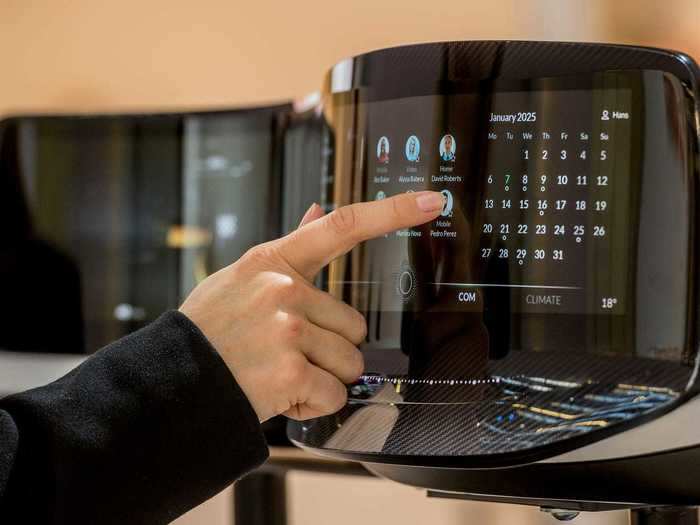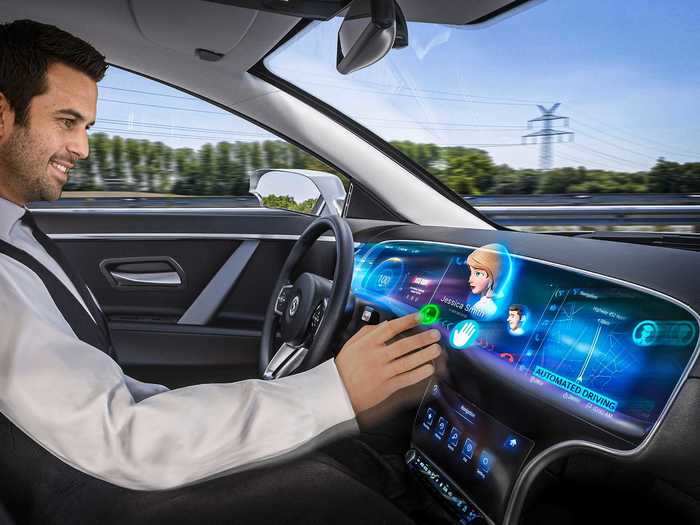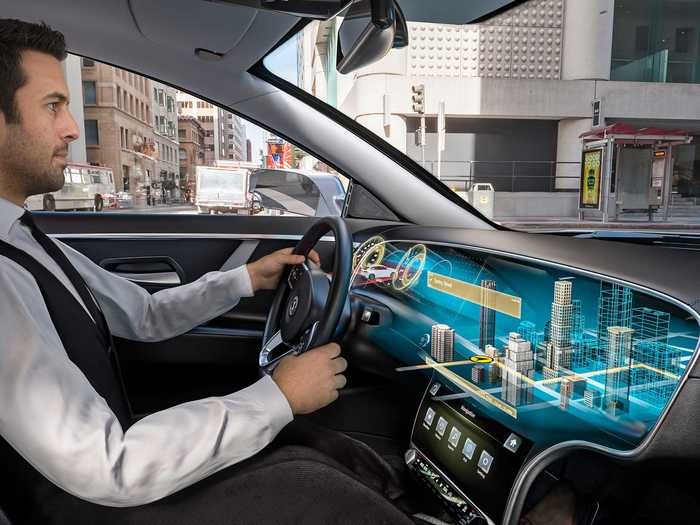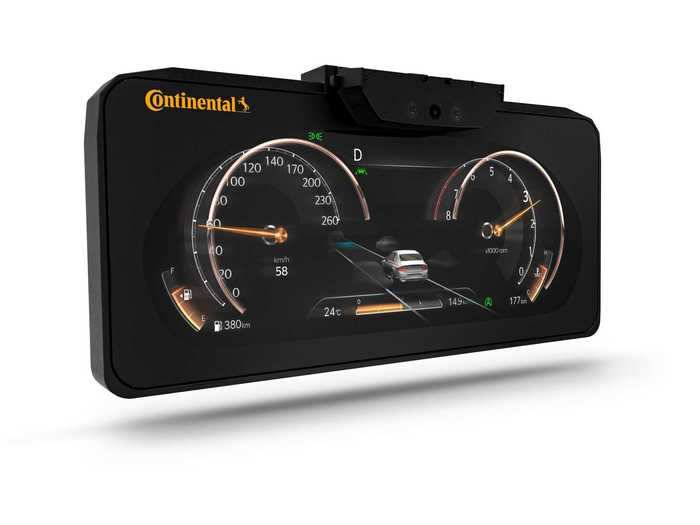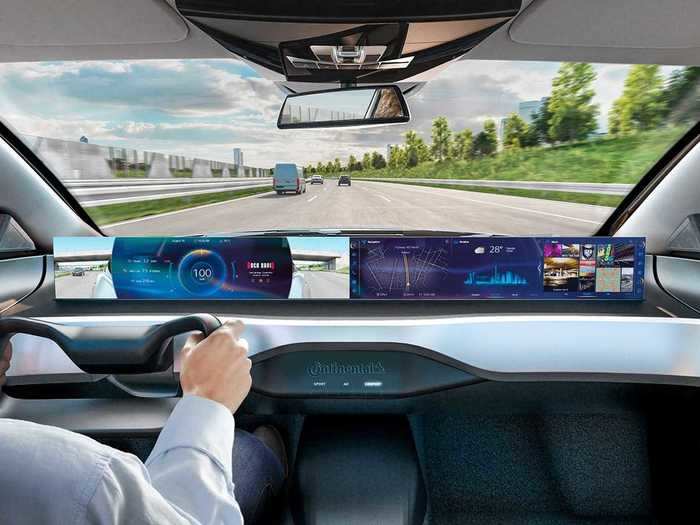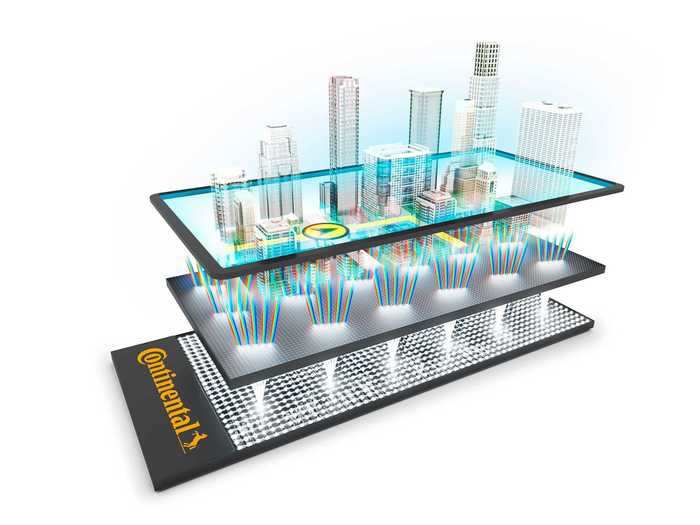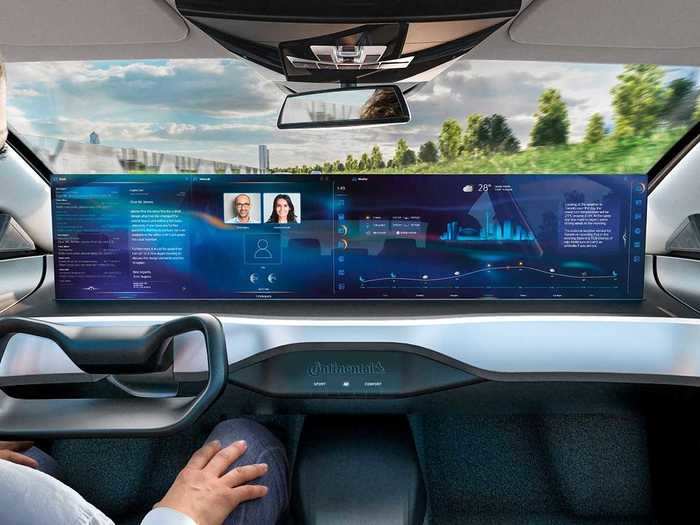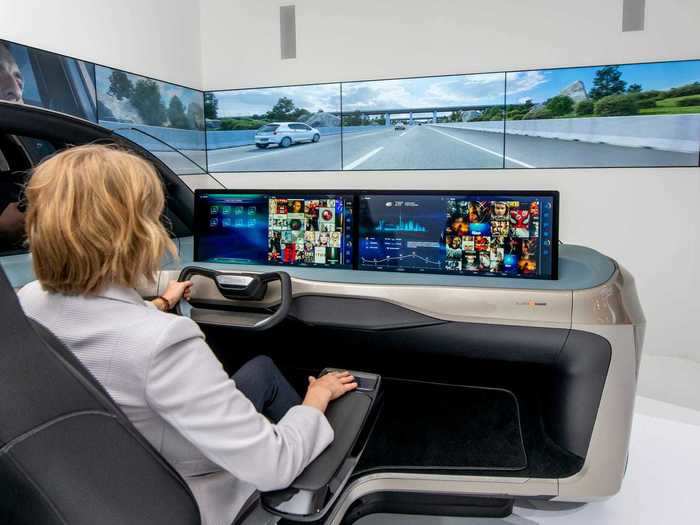A video call on the Continental 3D dashboard display.Continental
- Continental, a German auto manufacturing company, partnered with Silicon Valley-based display technology startup Leia to create a 3D car dashboard that can be seen without wearing specialized glasses.
- Continental claims the dashboard allows drivers to absorb information in a more rapid, and therefore safe and non-distracting, manner.
- The 3D dashboard can relay pertinent information, such as projections of GPS directions and a 360-degree parking assist view.
- While the car is in an autonomous driving mode, drivers can do otherwise unthinkable actions while driving: video chat, watch movies, and play video games, to name a few examples.
- Visit Business Insider's homepage for more stories.
Continental, a German manufacturing company, partnered with Silicon Valley-based display technology startup Leia to create an innovative 3D dashboard for cars that can be seen without wearing specialized glasses.
The dashboard provides the driver with pertinent information — such as a projection of GPS directions — to ease the driving experience while increasing the driver's safety and speed of information absorbent, according to Continental.
Its maker claims the 3D displays won't be distracting to the driver because unlike 3D movies, the displays can't pop out and travel limitlessly around the car.
"We work with the graphic depth to the rear and allow all 3D-objects a maximum of five centimeters out of the picture," product manager of display solutions at Continental Kai Hohmann said in a statement. "This is much more relaxed for the eye and will ensure the driver does not become distracted."
The dashboard's creation follows an uptick in autonomous driving trends that allow drivers to take their complete focus off of the roads at all times. In the future, while a car is in its autonomous driving mode, the display will be able to offer activities that drivers otherwise can't safely partake in, such as video chatting, gaming, internet and social media browsing, and watching television.
Read the original article on
Business Insider
This isn't the only display Continental is currently working on.
Curved plastic lens display.
Continental
The company also announced a curved lens display project that combines the instrument cluster with the central display into one large curved plastic screen.
Several objects will be 3D projected in the GV80's instrument cluster, such as warning signs and pointers.
A video call on the Continental 3D dashboard display.
Continental
The displays can be seen without 3D glasses by using parallax barriers, which divides and angles images a certain way to appear 3D to the human eye. This is different from the Diffractive Lightfield Backlighting used in the dashboard.
However, unlike the dashboard, the GV80's instrument cluster will rely on a camera inside the car to trace the driver's gaze.
Continental 3D dashboard display.
Continental
The camera can also detect if the driver is tired or has been distracted by the 3D instrument cluster for too long.
The 3D display system will begin production by 2022, but a slightly tweaked iteration of it will be used in the HMC Genesis GV80's instrument cluster.
Continental 3D instrument cluster.
Continental
"With our volume-production display featuring autostereoscopic 3D technology, we are raising human-machine interaction to a whole new level and laying the foundations for intuitive communication in the connected cockpit of tomorrow," head of Continental's Human Machine Interface business unit of said Dr. Frank Rabe said in a statement.
Continental also created a 4K screen that covers the entire length of the cockpit with displays that come and go depending on the car's current driving mode.
Continental 3D dashboard display.
Continental
For example, when a human driver is manning the vehicle, only important information — such as navigation and speed — will appear, while the rest of the screen will disappear, according to Continental.
But when the car is in "automated mode", the display will extend back across the cockpit for the driver and front-seat passenger to access infotainment options.
The dashboard offers glasses-free 3D viewing by using Leia's "Diffractive Lightfield Backlighting" light technology. This technology also allows the dashboard to be seen clearly even if light is being shown directly onto it.
Light is diffracted through a screen to create a glasses-free 3D display.
Continental
"We are not refracting the light, we are bending and guiding it precisely to attain the optimal 3D-effect needed," Hohmann said in a statement.
A camera won't be needed to track head movements in order to display its 3D images, according to Continental.
Continental 3D dashboard display.
Continental
There are several applications for the 3D dashboard. For example, it can project directions from a GPS or a 360-degree parking assist view.
A Continental driving simulator.
Continental
Beyond practical uses, the dashboard can also project 3D greetings when drivers and passengers first enter the car.

